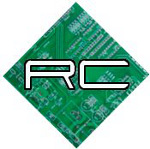
Here is the product page
|
||||||||||||||
The Netduino forums have been replaced by new forums at community.wildernesslabs.co.
This site has been preserved for archival purposes only
and the ability to make new accounts or posts has been turned off.
Community Stats
2
Neutral
User ToolsFriendsRuggedCircuits hasn't added any friends yet. Posts I've MadeIn Topic: Compatible Shields and Accessories08 September 2010 - 03:50 AM
We've released a new shield, the Quick Shield, which is similar to the Screwshield but uses spring-clamp terminals that do not require any tools like screw terminals do. Fits very nicely on a Netduino, and we even have a picture!
 Here is the product page In Topic: PWM Timer Access06 September 2010 - 03:23 AM
The plane of the RGB emitter is higher than that of the light sensor so any interference will probably be mostly due to reflection from whatever is above the shield. Try to keep reflective objects away, or if that doesn't work perhaps glue in some cardstock around the LED or light sensor. In Topic: PWM Timer Access06 September 2010 - 02:58 AM
OK, asking in a purely informational way, how would someone that just purchased a Netduino know this?
Forget the text, start putting it online as you write it, print it off when it's done. Just 1 suggestion.... In Topic: PWM Timer Access06 September 2010 - 02:31 AM
See, this is where knowing more about the .NET code would have made me look a lot smarter However, my guess is that interrupts come with timestamps because the event handler, after some latency, takes a snapshot of the system time (stabbing in the dark here but that sounds reasonable to me). That should work perfectly fine for decoding IR transmissions where sub-microsecond resolution is fine, but an InputCapture class with single-cycle resolution (what is used on the Arduino for IR decoding) would be useful for other applications like accurate frequency counting. Certain sensors (I'm thinking light-to-frequency sensors like the TAOS series) encode their sensed values in frequency thus accurate frequency measurement is important, at higher resolution than event timestamps. Not important for the Gadget Shield, but something to keep in mind maybe for future development In Topic: PWM Timer Access06 September 2010 - 02:22 AM
Where in the firmware? I looked for PWM code samples and didn't find any. Microsoft's .NET documentation site linked from your home page has no mention of PWM. Searching for PWM in your forums fails because search terms less than 4 characters are rejected. I looked in the source and all the PWM functions seemed to be stubs. I apologize but coming from the Arduino world the C#/.NET model is still very foreign. Please please PLEASE come up with something like this to help us Ardufolks out: http://arduino.cc/en...erence/HomePage And code samples wouldn't hurt either
Well, the more functionality the better (the byte array thing would be cool!) but simply being able to generate 38 kHz 50% duty cycle pulses is enough. IR transmitters don't change state faster than a couple of hundreds of microseconds so low-level hardware support isn't necessary for state changes, just 38 kHz square wave generation. Looks like 4.1.1 will at least make IR detection/generation possible using interrupts instead of input capture (crossing my fingers...as I'm not sure what the resolution and/or latency of DateTime is compared to actually reading a hardware timer/counter).
| ||||||||||||||
|
||||||||||||||
| This webpage is licensed under a Creative Commons Attribution-ShareAlike License. | ||||||||||||||

 Find content
Find content